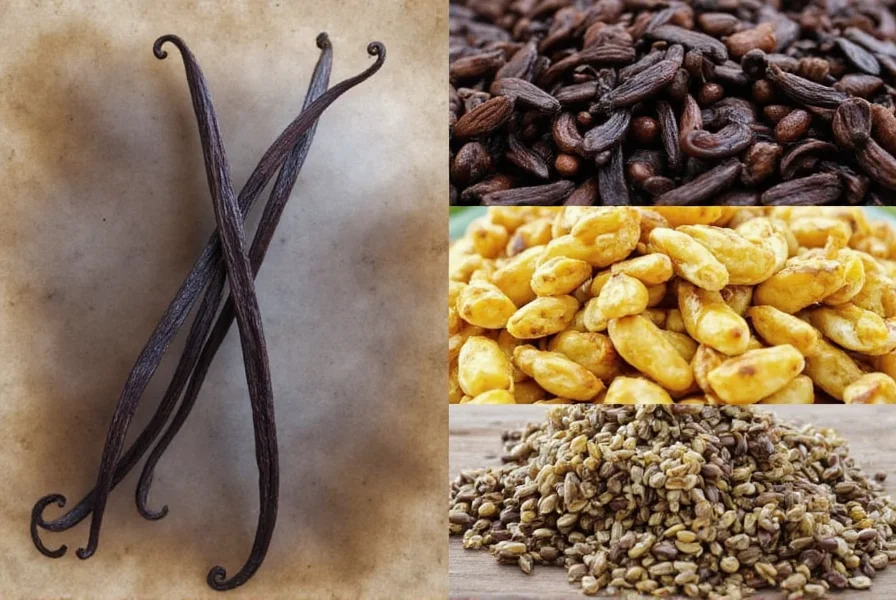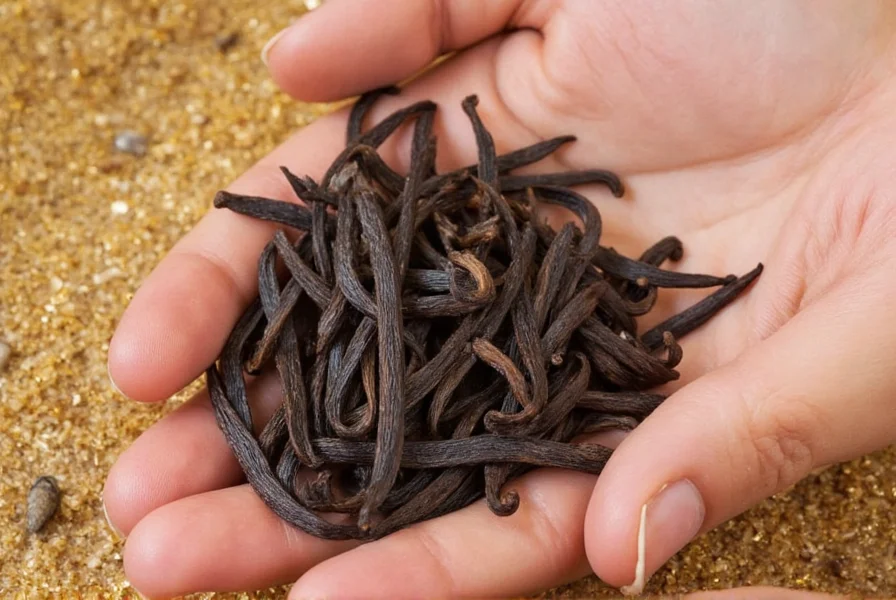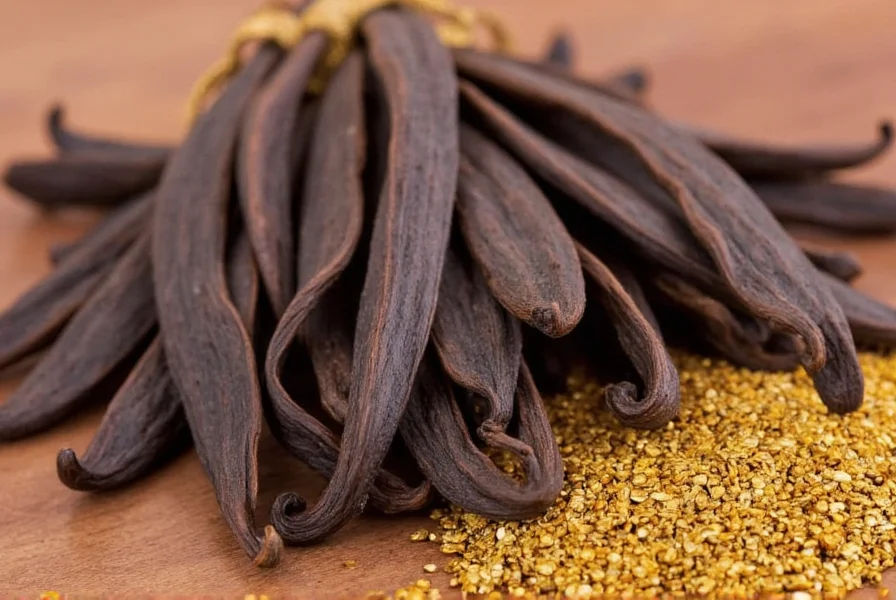When you reach for that small bottle of vanilla extract or whole vanilla beans at the grocery store, you're handling one of nature's most labor-intensive agricultural products. Unlike most spices that can be mechanically harvested, vanilla requires meticulous human intervention at every stage of production. This isn't merely a matter of tradition—it's biological necessity.
The Biological Bottleneck: Why Hand-Pollination Is Non-Negotiable
Vanilla orchids (Vanilla planifolia) possess a unique floral structure that prevents natural pollination outside their native Mesoamerican habitat. In Mexico, where vanilla originated, a specific melipona bee performs pollination. Everywhere else—in Madagascar, Indonesia, Uganda, and other major producing regions—farmers must manually pollinate each flower using a thin bamboo splinter or blade of grass.
Consider these staggering statistics about vanilla pollination:
| Production Stage | Time Required | Human Intervention |
|---|---|---|
| Flower blooming window | 12 hours maximum | Each flower must be pollinated individually |
| Bean development | 8-9 months | Daily monitoring for optimal harvest timing |
| Curing process | 3-6 months | Hand-sorting, sun-drying, and sweating cycles |
| Final grading | Additional weeks | Expert evaluation of moisture content and appearance |
During peak flowering season, skilled workers must inspect plantations twice daily to catch the brief blooming window. A single worker can pollinate approximately 1,000 flowers per day—yielding just 1-2 kilograms of cured beans. This represents thousands of precise hand movements for a minuscule amount of final product.
Geographic Constraints and Climate Vulnerability
Vanilla grows only within 10-20 degrees north and south of the equator, primarily in Madagascar (which produces 80% of the world's supply), Indonesia, and smaller quantities in Uganda, Papua New Guinea, and Mexico. This narrow growing zone creates inherent supply limitations.
Recent climate patterns have exacerbated these constraints. Cyclones regularly devastate Madagascar's vanilla regions—Cyclone Enawo in 2017 destroyed 30% of the crop, sending prices soaring to $600/kg. Farmers lack crop insurance, making them vulnerable to complete financial ruin from a single weather event. Unlike mechanized agriculture in temperate zones, vanilla farming remains stubbornly artisanal and exposed to environmental risks.

The Economics of Scarcity: Supply Chain Realities
Vanilla's price volatility stems from fundamental supply-demand imbalances. Consider these market dynamics:
- Production lag: It takes 3 years for a vanilla vine to produce its first flowers after planting
- Yield limitations: Each vine produces only 50-100 beans annually under optimal conditions
- Post-harvest losses: Up to 60% of freshly harvested beans may be rejected during curing
- Speculative trading: Middlemen often hoard beans during low-production years, anticipating price spikes
When Nestlé reformulated its ice cream to use real vanilla in 2015, global demand surged while supply remained constrained. Prices jumped from $125/kg to $500/kg within 18 months—a perfect demonstration of how minor demand shifts create massive price volatility in this delicate market.
Quality Grading and Authentication Challenges
Not all vanilla beans command the same price. The premium market distinguishes between grades based on:
- Length (premium beans exceed 15cm)
- Moisture content (30-35% is ideal)
- Oil content (higher vanillin concentration = better quality)
- Surface appearance (plump, oily beans with crystalline vanillin deposits)
Authenticating genuine vanilla has become increasingly difficult as synthetic vanillin (made from wood pulp or petrochemicals) floods the market. Reputable producers now implement traceability systems, but these add further costs to an already expensive product. Consumers often pay premium prices for products labeled "pure vanilla" that contain only 1-2% actual vanilla content.

Why Vanilla Extract Costs Less Than Whole Beans
Many consumers wonder why pure vanilla extract costs less than whole vanilla beans. The answer lies in extraction efficiency—1 kilogram of beans produces approximately 4 liters of extract. Commercial producers use optimized alcohol solutions to maximize vanillin extraction, making the per-serving cost of extract significantly lower than using whole beans. However, artisanal producers argue that whole beans provide superior flavor complexity that extraction cannot replicate.
The Future of Vanilla Pricing
Several developments may stabilize vanilla prices in coming years:
- Biotechnology advances: Researchers are developing self-pollinating vanilla varieties
- New growing regions: Trials in Costa Rica and Hawaii show promise for diversified production
- Contract farming: Major food companies are signing long-term agreements with growers
- Alternative sources: Fermentation-derived vanillin offers a natural but more affordable option
However, true Bourbon vanilla—the gold standard—will likely remain expensive due to its irreplaceable flavor profile and the biological realities of its cultivation. As climate change intensifies weather patterns in traditional growing regions, prices may experience continued volatility.
What Consumers Should Know
When purchasing vanilla products, understand these key distinctions:
- "Pure vanilla extract" must contain 13.35 ounces of vanilla beans per gallon by FDA standards
- "Vanilla flavor" typically contains synthetic vanillin with no actual vanilla
- Whole beans maintain flavor longer than extract but require proper storage
- Madagascar beans offer classic creamy notes while Mexican varieties provide smokier profiles
For home use, splitting and scraping beans provides the most intense flavor, while extract offers convenience. Neither is inherently superior—they serve different culinary purposes. Understanding why genuine vanilla commands premium prices helps consumers make informed choices about when to invest in the real product versus acceptable alternatives.











 浙公网安备
33010002000092号
浙公网安备
33010002000092号 浙B2-20120091-4
浙B2-20120091-4